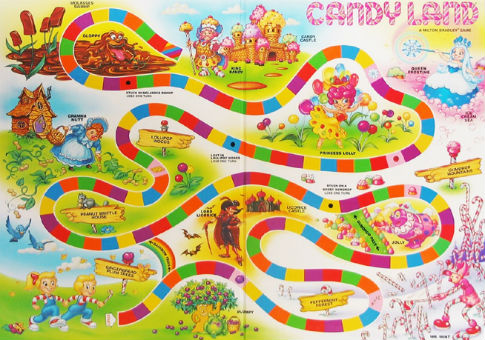The hottest art exhibit in New York this summer is the Museum of Ice Cream. It is a pop-up museum that opened on July 29 across from the Whitney Museum on Gansevoort Street in Chelsea. The Museum of Ice Cream was originally scheduled to close at the end of August, but due to popular demand it extended its run until September 10. Maryellis Bunn, the 24-year-old creator of the Museum of Ice Cream, tells us that she conceived of the idea as a child and now, as an adult with the means to do it, has made that dream a reality.
With few exceptions, the patrons of the Museum of Ice Cream are not children. They are well-dressed New Yorkers, conspicuously of the Millennial variety, who queue up outside for what the curators describe as "20 minutes of liking, licking, and sharing." One suspects that the elation of standing in this line has as much to do with the fact that you have tickets to a sold-out show as it is with the prospect of entering a childhood dessert fantasia.
The museum itself is a smallish seven rooms, sequenced to proceed through the making of a sundae as if playing a real-life version of Candy Land. There is the cone room decorated in all variations of waffle shapes. There is the ice cream room in which each patron is asked to contribute a scoop of shortening to a giant mound. There is the brown, silky-draped chocolate room into which the smell of cocoa is copiously pumped. This is followed by the swimming pool of sprinkles (actually small colored beads to keep everything hygienic). This is followed by the ice cream dispenser room and a playground with a seesaw in the shape of a scoop and a swing in the shape of an ice cream sandwich.
In each room there is something to taste, something to do, and something to take a selfie in front of. In this respect the Museum of Ice Cream delivers the way great children's museums like Philadelphia's Please Touch Museum do, indulging the child’s impatience at being told to keep your hands to yourself as towering adults stand above you with their arms crossed, looking silently at the wall. Patrons are given miracle berries along with a cone of soft serve and a lemon. When sucked, miracle berries mute everything but the sweet taste receptors on the tongue, making the lemon taste like Southern lemonade. In the cone room, patrons are given candy balloons filled with helium. What precisely this has to do with ice cream cones escapes me. But eating a sugary something that made me talk funny for a second was an effective one-two punch of silly nostalgia, which at bottom is the theme of the whole museum.
The celebration of the child’s ecstatic fascination with ice cream is hardly new. In Delirious, Eddie Murphy performed five minutes on ice cream’s singularity within the micro-culture of childhood that remains funnier than anything from 1980s stand up. And the reason for its staying power is that Eddie Murphy's ice cream nostalgia is unvarnished. Yes, Murphy sings the silly ice cream song, "I have some ice cream, I have some ice cream, and I’m going to eat it all." But he makes no pretense about how the joy of ice cream’s sweetness is far surpassed by the opportunity it affords to be cruel to other children. "Want a lick?" He says, extending his ice cream to the kid too poor to have any. "Psych!" He shouts as he yanks it away, deliriously happy with himself.
Ice cream is not just something to enjoy, it is something to be seen enjoying. And it is no coincidence that it is the dessert of the summer that holds this unique position, a time when children were historically left to co-exist in their own juvenile communities, free from the civilizing routines of school, like the castaways in Lord of the Flies.
On its surface, the Museum of Ice Cream strives for an uncomplicated nostalgia. In the main, it achieves this. To the extent it falls short, it is only because of the logistical limits of its size. To fully achieve the desired Willy Wonka Chocolate Factory effect, the space and its exhibits would have to be four to five times larger to inculcate the childhood sensation of being dwarfed by an enormous, magical world.
But it would be a mistake to say that the pleasures of the Ice Cream Museum are devoid of the same status envy that made a fully loaded, double scoop waffle cone so wonderful as a kid. What the exhibit lacks in scale, it more than makes up for in photo appeal. The rooms, most especially the swimming pool of sprinkles and the ice cream scoop seesaw, are ideal backgrounds for selfies. They are colorful. They look fun. And they let you show everyone in your Instagram community that you have your sold out ice cream.
